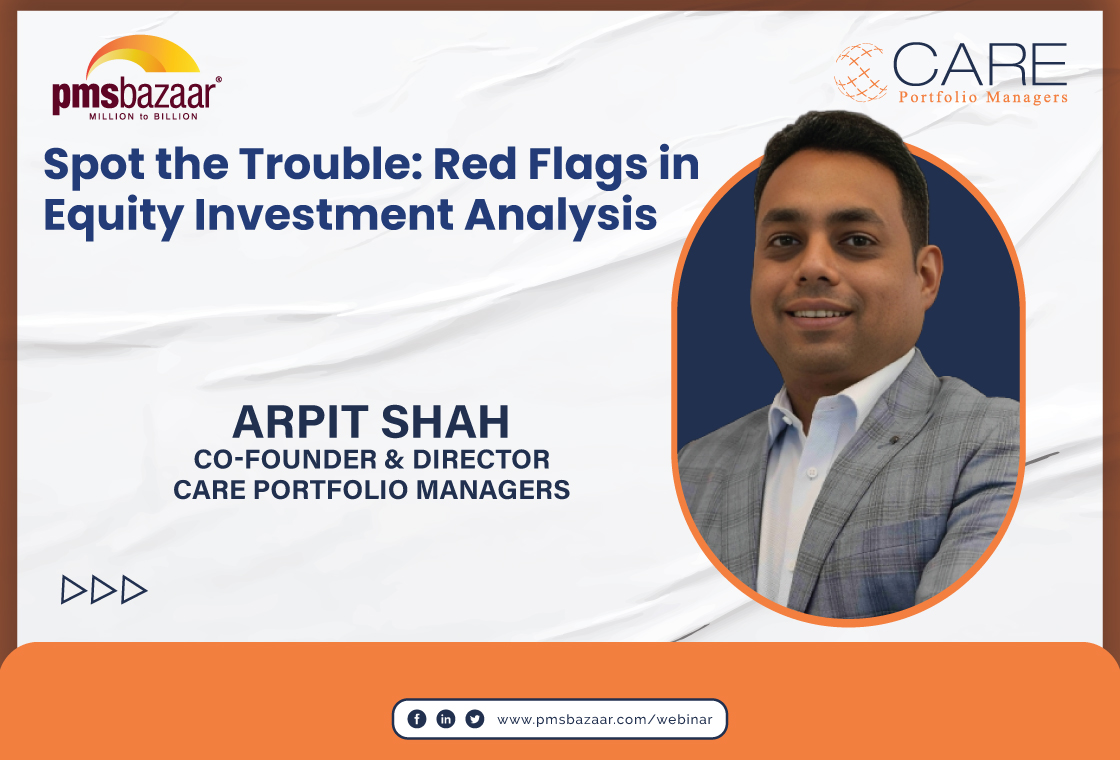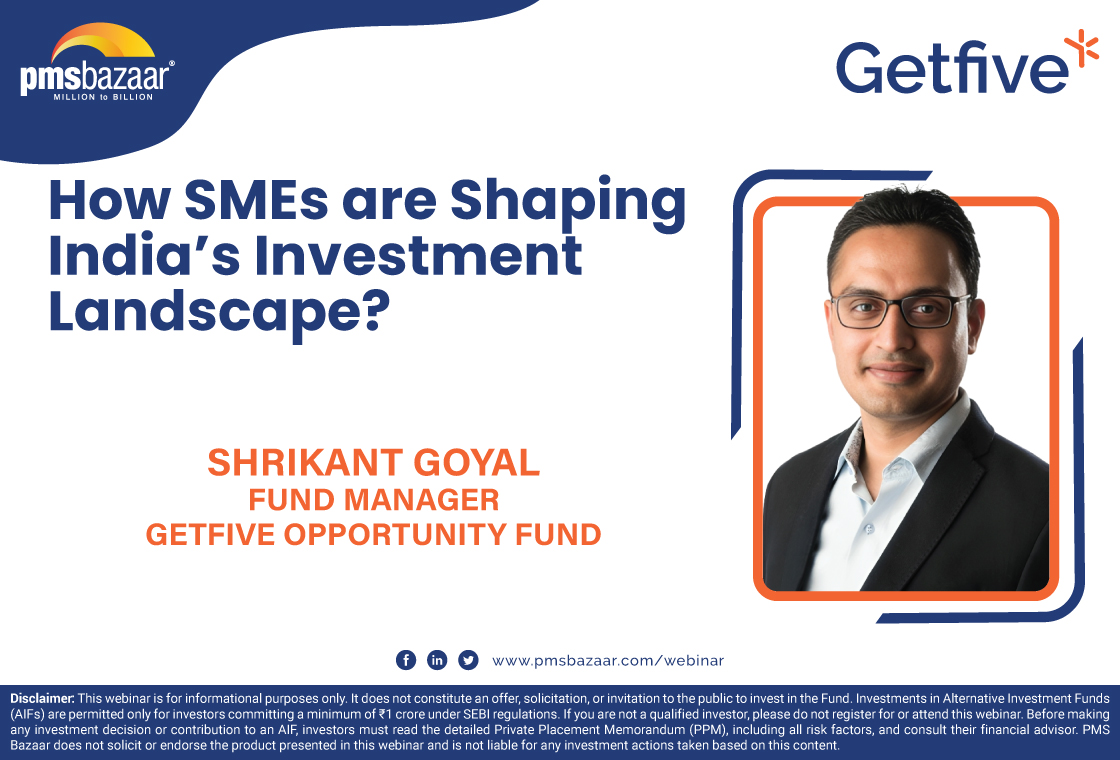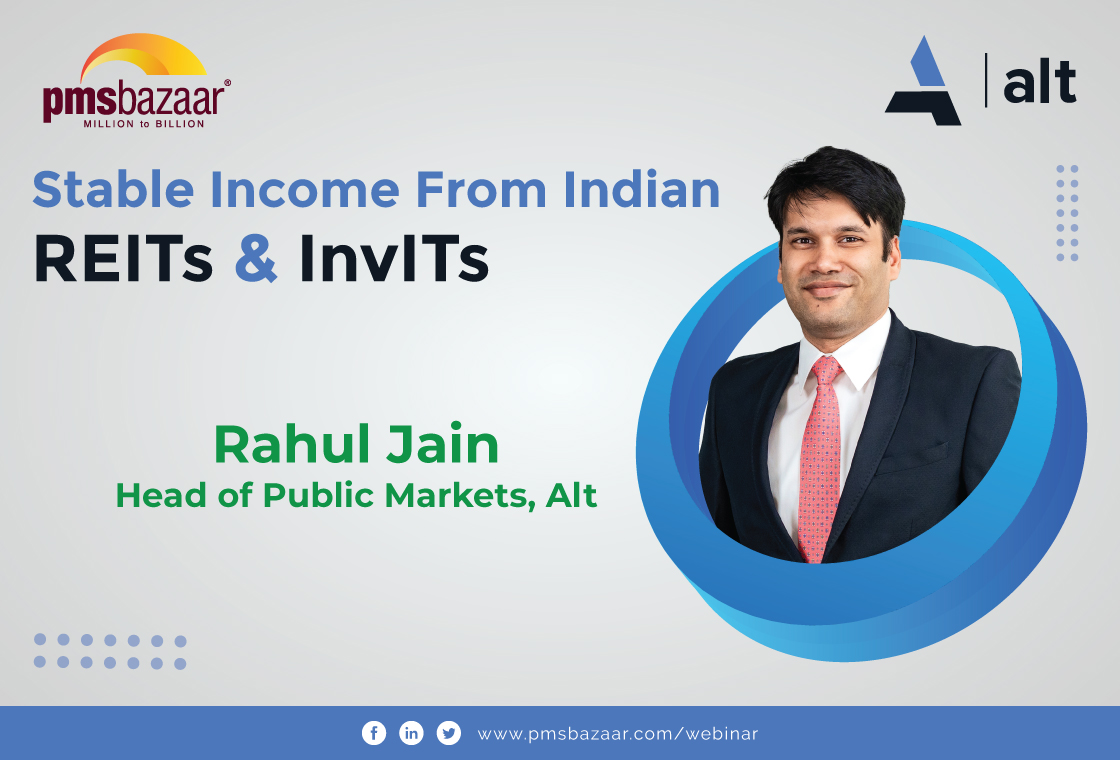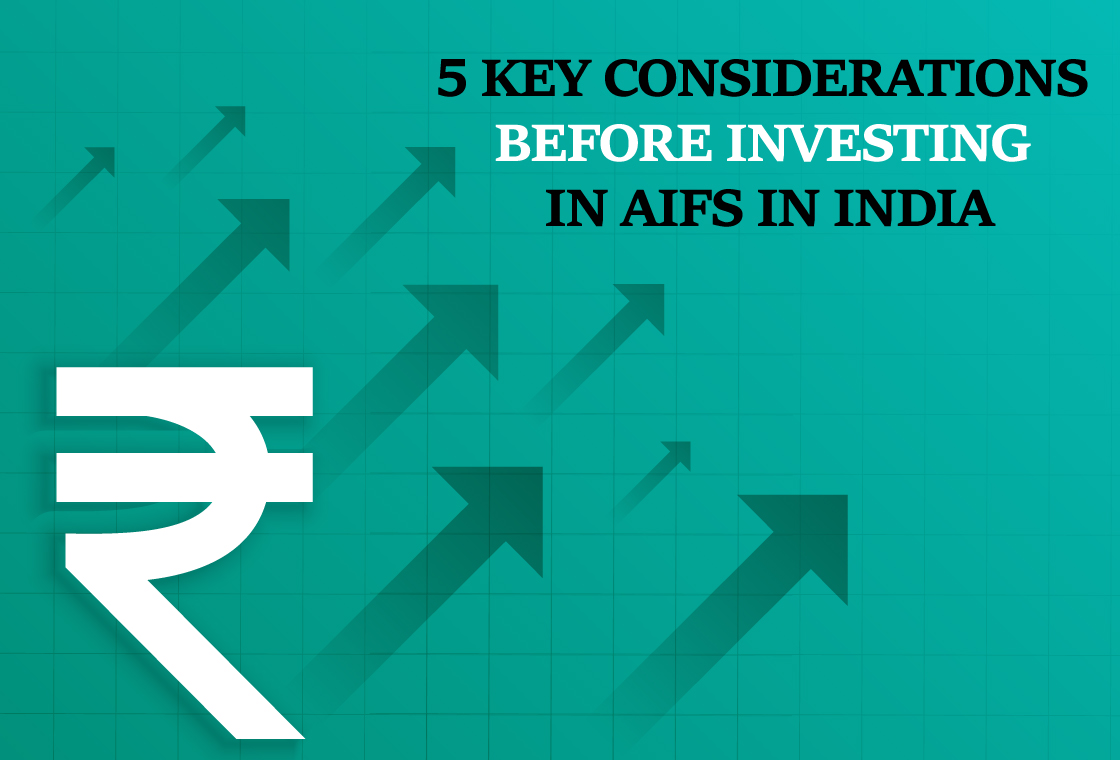The most critical aspect of portfolio construction for investors of all hues is asset allocation. This determines the course for any investor’s journey towards their personal goals, more so in the alternatives space. To shed more light on this critical factor, Mr. Saurabh Jain, MD & Head, Wealth Management at Standard Chartered India had an enlightening discussion with Mr. Vikaas M Sachdeva, Managing Director, and Mr. Madanagopal Ramu, Head-Equities and Fund manager, both from Sundaram Alternates.

Mr. Sachdeva kicked off the interaction by asking about the constituents of a typical portfolio of an HNI in the present times when there are too many choices and avenues available.
Asset allocation pattern of HNIs
Mr. Jain started off by first stating that asset allocation is the primary factor that determines the returns from a portfolio and also differentiates it from another portfolio. He said, a traditional portfolio typically had a 60:40 equity to bond allocation. But that pattern is changing over the past few years, in his opinion. Increasingly, private assets, alternate assets, and alternative strategies were becoming a part of HNI client portfolios. Mr. Jain went on the state that HNI clients allocated 15-20% of their portfolios to alternate assets. The rest was parked in traditional avenues such as equities, bonds, etc. In a year like 2022, uncorrelated assets such as stocks and bonds fell together. So, even a 60:40 equity to debt portfolio had significant drawdowns. So, exposure to alternate assets, which are uncorrelated to the broader markets, is increasingly making sense to investors, especially HNIs.
There are now two divergent views on the US markets, for example, he stated. One is that the US will avoid a recession and so there is a bullish case for equities and so investors should stay with the momentum. Another is that a recession is certain and that it is necessary for extreme caution.
In Mr. Jain’s opinion, both views represented extreme cases. A better approach was to have a balanced view and take a diversified portfolio stance, in his view. He said there was a structurally strong case for Indian equities, bonds, and alternates.
India versus other key markets
Mr. Sachdeva raised an important point on how Indian investors or money managers always thought investing locally was the best and that there was no better market presently as attractive as India was. In this regard, he wanted to know whether there were other better emerging or other markets that made stronger investment cases as a part of the overall asset allocation of HNIs.
Mr. Jain said Asia ex-Japan and even Japan were attractive, as did China. He believed that the stimulus in China and the relatively inexpensive valuations made a case for investing there.
Mr. Ramu then stepped in to ask how the impact of the current high interest rates would play out on developed markets. He wanted to know the bias towards or away from a recession.
There was a high likelihood of a recession in the US sometime next year, in Mr Jain’s view. He was of the opinion that despite the Federal Reserve’s indications of a couple of rate hikes notwithstanding the recent pause, the cut in rates would happen sooner than expected. He felt that US government security yields would not be at the levels they are at now and that the situation presented a great opportunity to invest in government and high-quality bonds.
Mr. Ramu then asked if Indian equity valuations were a matter of concern, given that earnings growth was good. He further wanted to understand if the high interest rates would hurt India’s economic growth at some point in time.
Mr. Jain said that he wasn’t unduly worried about high inflation. He said the RBI has managed inflation and interest rates spectacularly well. India will always be a bit more expensive compared to other emerging markets and that has historically been the case that the premium would stay.
He said the Nifty could be trading at a P/E of 18.5 times one-year forward as against the long-term average of 17 times, which is not what HNIs should be concerned about.
India becoming a middle-income country with over $2500 per capita income, the digital infrastructure, capex cycle revival, and the whole demographic dividend would be supporting factors for the markets over the next decade.
In a multi-polar world looking to diversify supply chains, India will be a key beneficiary.
Cultural biases in asset allocation
Mr. Sachdeva then proceeded to ask about factors influencing decision-making processes in different cultures around the world.
Mr. Jain affirmed that there were indeed cultural and social biases when it came to investing. In India, there was a lot of cultural affinity to gold, although it was shifting gradually towards the financialization of savings and alternative assets. In developed markets, HNIs and other investors are ready to take risks and plow their money into equities and alternate assets. They were very rule-based and organized. Developed market investors looked at the world very differently from the way Asians did, in his opinion. As inflation has been on a lower trajectory in India over the past decade, many asset classes came to the fore.
ESG factor in investing
Since there was a lot of talk around ESG (Environmental, Social, and Governance) based investing with money managers around the world and in India, Mr. Sachdeva wanted to get a sense of where all this was headed.
Mr Jain said globally 15% of the investors said they would increase exposure to ESG. In India, more than 60% of the money managers were looking to increase investments in ESG over 2023.
From an ESG perspective, there are a few mutual funds dedicated to it, but the total assets under management have remained static at around Rs 10,000 crore to Rs 11,000 crore from June 2021. So, the interest in ESG has not necessarily translated to higher AUMs. Most of these funds have not managed to beat the BSE 100.
Over the long term, there are two key themes to note. One is the energy transition and the whole shift to renewable and green energy sources. The other theme is related to water conservation.
A product focused on these themes has done well globally, but in the Indian context, it may not have delivered well relatively.
However, over time, we will see more fund managers and investors using the ESG screener to choose stocks, with rising awareness.
The high interest around Artificial Intelligence
Given that there are a lot of news and views on the hot topic of Artificial Intelligence (AI), Mr. Ramu wanted to understand how investors are soaking it all in with respect to financial services and wealth management.
Mr. Jain said that AI was a good theme to play, particularly in the US. From a wealth management perspective, AI in the sense of a chatbot etc. cannot replace the trust that comes with the product manufacturer or advisor. He said technology can be a game changer in the sense that advice would now be available even to non-HNI clients, given the lower costs associated with technology driven advice. Technology can be used to assess and reduce risk as well as improve returns or both. But chatbots will not replace wealth managers.
Illiquidity considerations
Investors often worry about concerns around illiquidity in alternates. Mr. Ramu wanted to understand how the concerns of HNIs and investors could be assuaged in this aspect.
Mr. Jain said asset allocation and diversification held the key to addressing investor concerns. Asset allocation can help reduce portfolio volatility. Investors can lower volatility by allocating to private assets, alternative assets and liquid alternatives, and hedge funds. He said, in 2022, diversifying to uncorrelated assets such as alternates, which delivered slight positive returns compared to negative returns from equities and bonds, helped investors.
Illiquidity is in the nature of some alternative products. The risk range and the liquidity range are a spectrum.
He said investors could build a foundational portfolio and an opportunistic portfolio for reducing risk and improving returns. So, the portfolio construction must be in line with an investor’s goals, time horizon, and risk appetite.
Of course, investors should not be putting their entire alternative asset allocation in illiquid assets in the chase for superior returns.
The approach of new-age HNIs
Given the ascent of new-age HNIs who fancy cryptocurrencies, fintech, venture capital, etc., Mr. Sachdeva sought to know the difference in the approach they have to wealth management compared to vintage investors in terms of risk appetite, asset allocation, etc.
Mr Jain said that there was a significant difference in some cases, in terms of the approach seen in new-age HNIs or start-up entrepreneurs vis-à-vis vintage investors. New-age HNIs have a better risk appetite than traditional investors, in his opinion. They are also far more informed on investment avenues, and opportunities, including alternatives than vintage investors.
These new-age HNIs are more open to investing in PE and VC products. They also realize that wealth needs to be preserved and so they understand asset allocation as well, as a tool for reducing portfolio risks. So, they look at liquid alternatives as well while investing.
Then Mr. Jain went on to answer questions from participants in the webinar. On a question on gold, Mr. Jain said the yellow metal must be held in a portfolio more as a hedge rather than as a return generating class over the long term. He observed that from 1970, gold has given 3.3% returns in dollar terms and 8.8% in rupee terms.
The Webinar Panel discussed all the above-mentioned points and more. Watch the entire session with the appended link below -
Get access to rich data and analytics of PMS & AIF by subscribing to us. Join the 50000+ investors & experts now: Subscribe NOW
Recent Blogs
.jpg)
Passively Active Investing — A Modern Investor’s Lens on ETF-Based PMS
PMS Bazaar recently organized a webinar titled “Passively Active Investing — A Modern Investor’s Lens on ETF-Based PMS,” which featured Mr. Karan Bhatia, Co-Founder and Co-Fund Manager , Pricebridge Honeycomb ETF PMs. This blog covers the important points shared in this insightful webinar.

Spot the Trouble: Red Flags in Equity Investment Analysis
PMS Bazaar recently organized a webinar titled “Spot the Trouble: Red Flags in Equity Investment Analysis,” which featured Mr. Arpit Shah, Co-Founder & Director, Care Portfolio Managers. This blog covers the important points shared in this insightful webinar.

Long-Only AIFs Rebound Sharply in October; Long-Short Strategies Lag Despite Lower Volatility
106 long-only AIFs averaged 3.68% vs 32 long-short AIFs at 2.7%; only 24–31% of funds beat key indices

Markets log strongest monthly gains in 7 months; PMS performance turns near-uniform in October
Nifty 50 TRI gained 4.62%, BSE 500 TRI rose 4.27%; 415 of 427 equity PMSes ended positive

How SMEs are Shaping India’s Investment Landscape?
PMS Bazaar recently organized a webinar titled “How SMEs are Shaping India’s Investment Landscape?” which featured Mr. Shrikant Goyal, Fund Manager, GetFive Opportunity Fund.

Stable Income from Indian REITs and InvITs
PMS Bazaar recently organized a webinar titled “Stable Income from Indian REITs and InvITs,” which featured Mr. Rahul Jain, Head of Public Markets, Alt.

5 Key Considerations Before Investing in AIFs in India
Alternative Investment Funds (AIFs) have emerged as a compelling option for sophisticated investors seeking diversification and potentially superior returns. But venturing into AIFs requires a clear understanding of their unique characteristics that go beyond simply knowing what they are and their categories.

How AIF can help in diversification?
Traditionally, Indian investors have relied on a mix of stocks and bonds to build their wealth. While this approach offers diversification, it can still leave your portfolio vulnerable to market fluctuations. Enter Alternative Investment Funds (AIFs), a dynamic asset class gaining traction for its ability to unlock diversification beyond the realm of conventional options.

